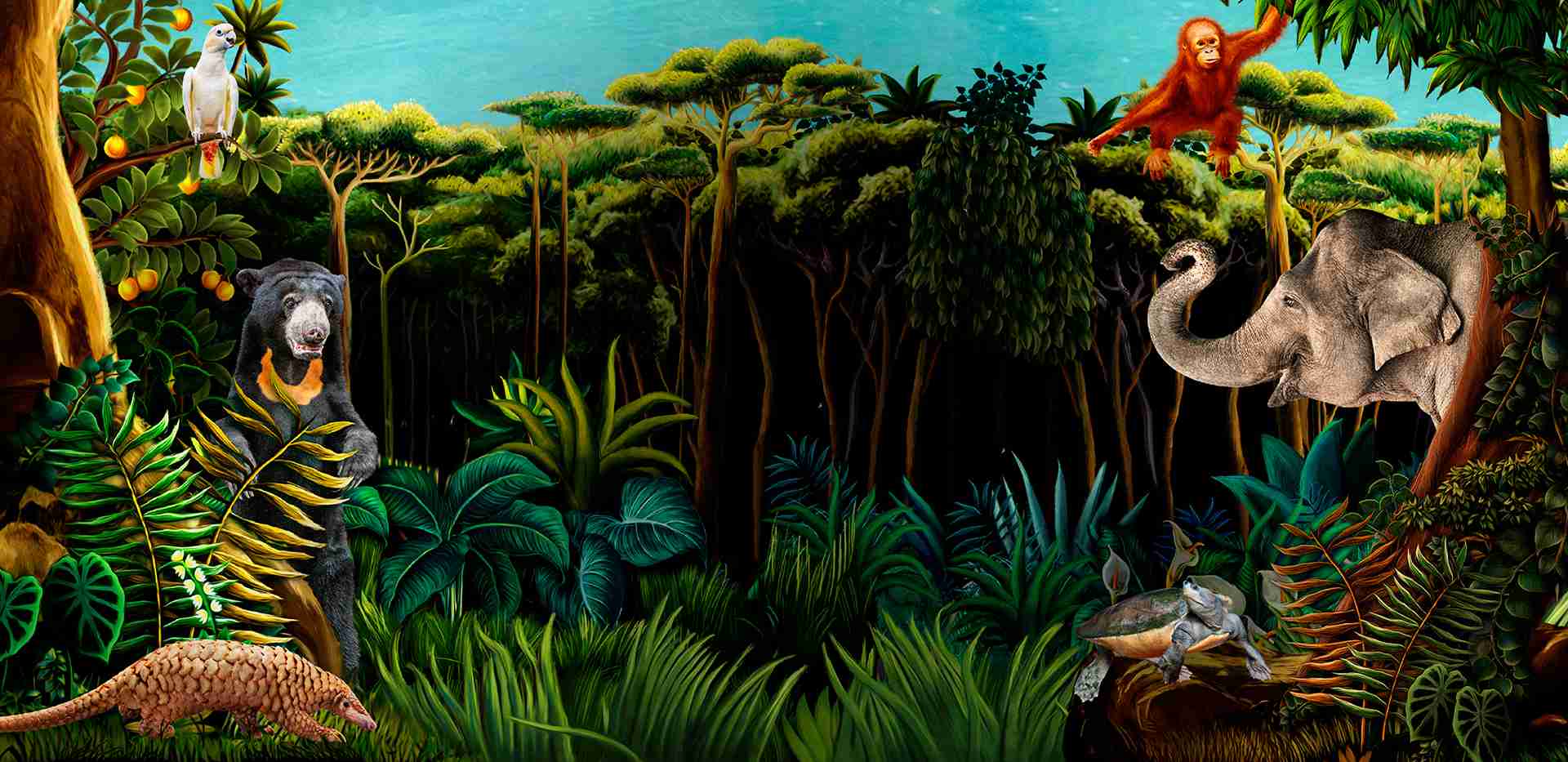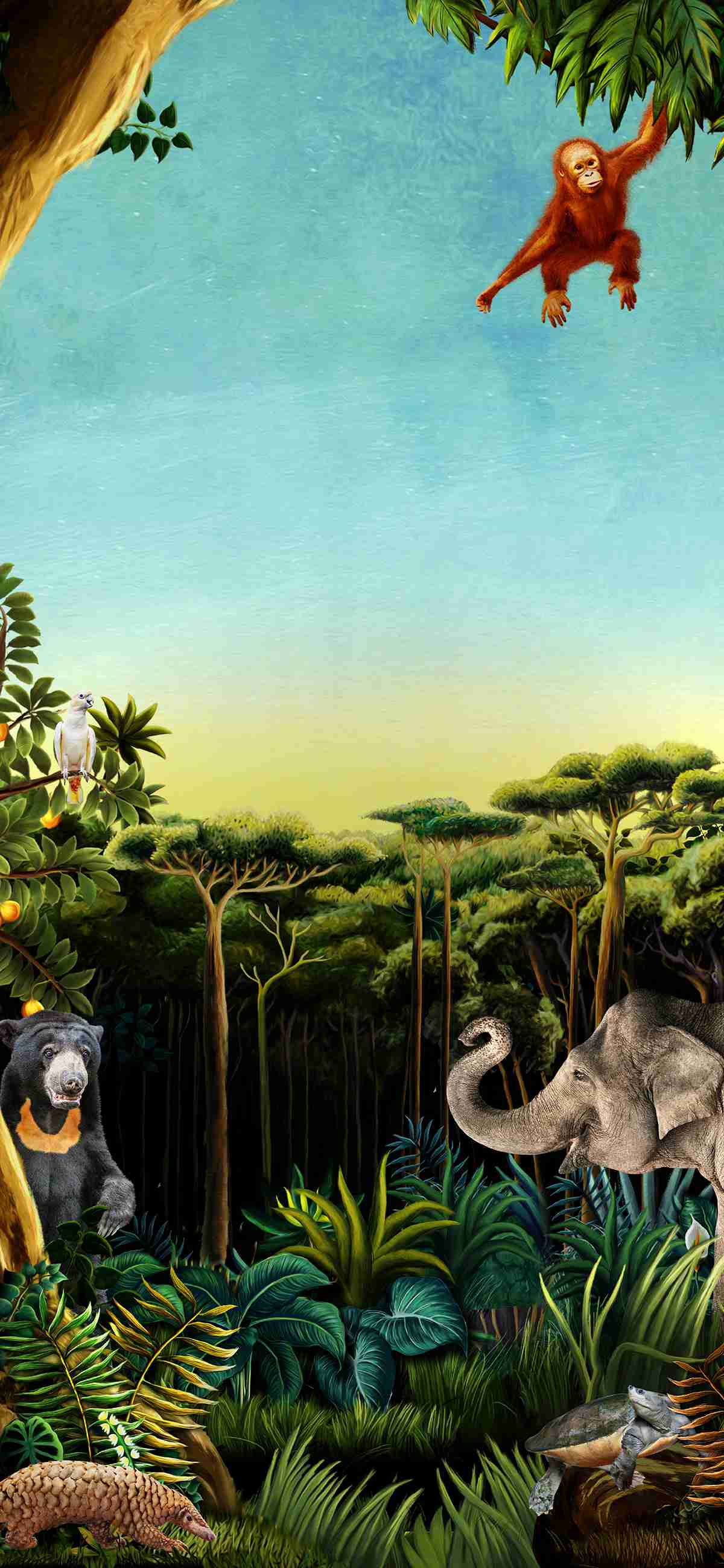Singapore Zoo celebrates reptile baby boom
17 July 2025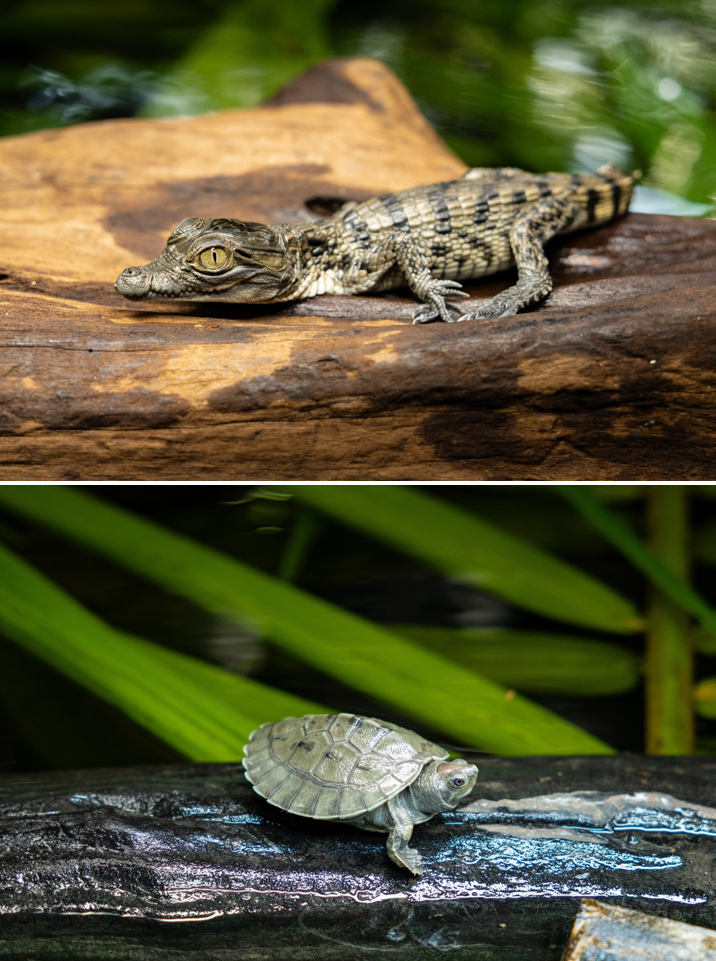
Top: The eagerly awaited hatching of the Philippine crocodile happened over the course of two days, with the little one making high-pitched vocalisations as it broke out of its shell.
Bottom: One of the two painted terrapin hatchlings. Now smaller than the size of a palm, they can grow up to 70cm long.
Photo credit: Mandai Wildlife Group
Luke Harding, Curator, Animal Care (Operations), Mandai Wildlife Group said, “Behind each successful hatching is a journey of perseverance, trial, and careful planning. Many of these species are notoriously difficult to breed in human care. That’s why seeing them thrive is incredibly rewarding and meaningful for us. They reflect the dedication, skill, and persistence of our animal care and veterinary teams. Breeding the Philippine crocodile outside its native range and being one of the few zoos globally to hatch the painted terrapin are milestones we truly don’t take for granted. All these hatchings provide valuable opportunities for research and knowledge sharing, deepening our understanding of species care and supporting collaborative breeding efforts among zoos globally.”
Singapore Zoo welcomed its Philippine crocodile pair, Reginald and Delilah, in 2022. The critically endangered crocodiles were genetically matched and transferred to Singapore from National Aquarium Denmark. This species is difficult to breed due to the challenges of pairing them and their aggressive nature, especially during the breeding season. Breeding efforts came to fruition after the animal care team transferred the 11-year-old crocodiles to a new habitat, which includes trees acting as visual barriers, varied vertical spaces, and a pond with adjustable dividers that allow the crocodiles to retreat for privacy or come together when comfortable. The habitat also features enhanced heating and lighting conditions – critical for regulating body temperature and hormone levels essential to successful breeding.
Positive signs emerged when Delilah began nesting, moving substrate such as leaf litter and grass around the exhibit. Reginald was also observed guarding the nest alongside Delilah, demonstrating dual parental care, a behaviour unique to the Philippine crocodile. A decision was made to artificially incubate any eggs to maximise their chances of survival by providing precise control over temperature and humidity, and to minimise disturbance. The animal care team carefully retrieved the first-ever clutch of eggs on 15 March 2025 and incubated them at 31.5 degrees Celsius. Visual checks and candling – a process using light to monitor blood vessels and banding around the eggs – were conducted regularly to assess fertility and development. Despite these optimal conditions, only one of the two fertile eggs successfully hatched on 10 June 2025. The female hatchling has begun feeding on small fish and crickets and is settling well in an off-exhibit area.
There are also reasons for joy in the realm of turtles, with the arrival of two critically endangered painted terrapins on 29 April 2025, after nearly a decade of effort. These reptiles get their name from the males’ striking colouration during the breeding season, when their heads turn white with a vivid red stripe to attract females. The hatchings resulted from a combination of environment and diet enhancements, including relocating the adult terrapins to a new habitat with improved heating and lighting conditions for basking, secluded dark spaces for privacy, as well as ample sand and soil for nesting. Their diets were also adjusted to focus on leafy vegetables and grasses to support breeding success. The baby terrapins, both female, are developing well in a private space and have started to munch on sweet potato leaves and bok choy.
The Philippine crocodile and painted terrapin are both listed as ASAP species – identified by the IUCN Species Survival Commission (SSC) Asian Species Action Partnership (ASAP) as requiring urgent conservation attention to prevent their extinction. ASAP is a partnership focused on safeguarding Southeast Asia’s critically endangered land and freshwater vertebrate species. It supports its partners to accelerate conservation efforts and is hosted by Mandai Nature, the conservation arm of Mandai Wildlife Group.
No less exciting is the zoo’s first successful hatching of three Chinese leopard geckos on 27 May, 24 and 25 June 2025. Finetuning of temperature, humidity and habitat conditions paid off when the animal care team observed that the adult female had grown in size, with regular weight taking indicating she had laid eggs. The eggs were retrieved for incubation at 23 to 26 degrees Celsius, and the wee critters gradually emerged, sporting their signature dark-coloured bodies contrasted against white bands and orange eyes.
Slithering to more good news, RepTopia celebrated the birth of 13 western gaboon vipers on 12 May 2025, the first births in about a decade. Breeding in this species is triggered by seasonal changes, which the team replicated through a misting schedule that mimicked dry and wet periods. Optimal heating and lighting conditions were also in place, and feeding frequency for mum was reduced in line with its natural behaviour during breeding season. Gaboon vipers are ovoviviparous, meaning they give birth to live young after eggs hatch internally. This clutch includes five males and eight females, distinguishable by the males’ longer tail. These snakes are venomous from birth and possess the longest fangs among venomous snakes.
And there are more new beginnings on the horizon! In the coming months, the herpetology team expects hatchlings of New Caledonia giant geckos – the largest gecko species in the world – and critically endangered Annam leaf turtles, also known as the Vietnamese pond turtle. The eggs are being incubated and closely monitored by the animal care team, given the conservation significance of the turtles, with only around 50 individuals remaining in the wild.
, Mandai Wildlife Group, measures Philippine crocodile hatchling. Credit Mandai Wildlife Group.jpg)
Joey Yeo, Keeper, Animal Care (Operations), Mandai Wildlife Group, measures the Philippine crocodile hatchling which is about 25cm long, while her parents are almost 2m in length.
Photo credit: Mandai Wildlife Group
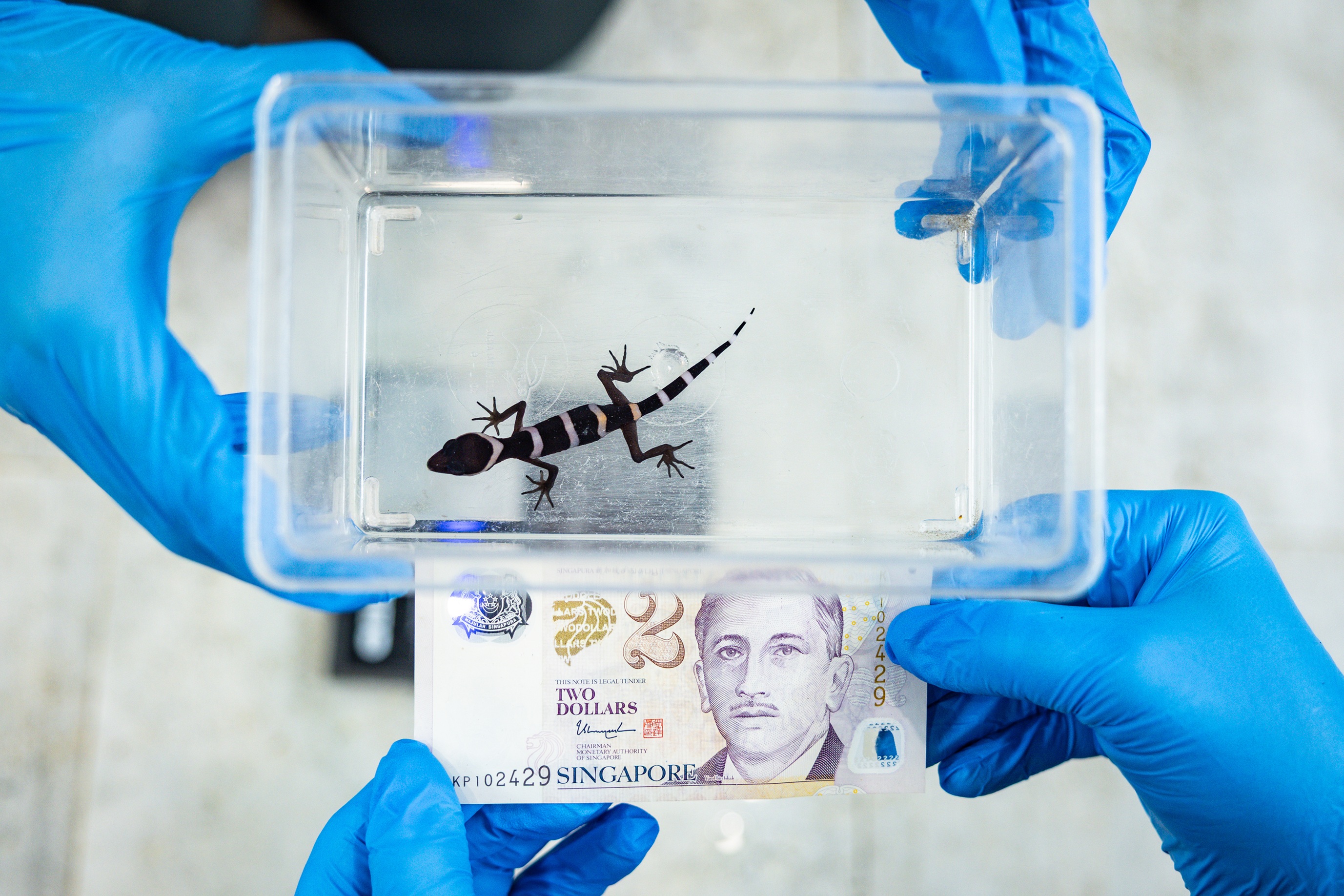
A size comparison of a little Chinese leopard gecko and $2 note.
Photo credit: Mandai Wildlife Group
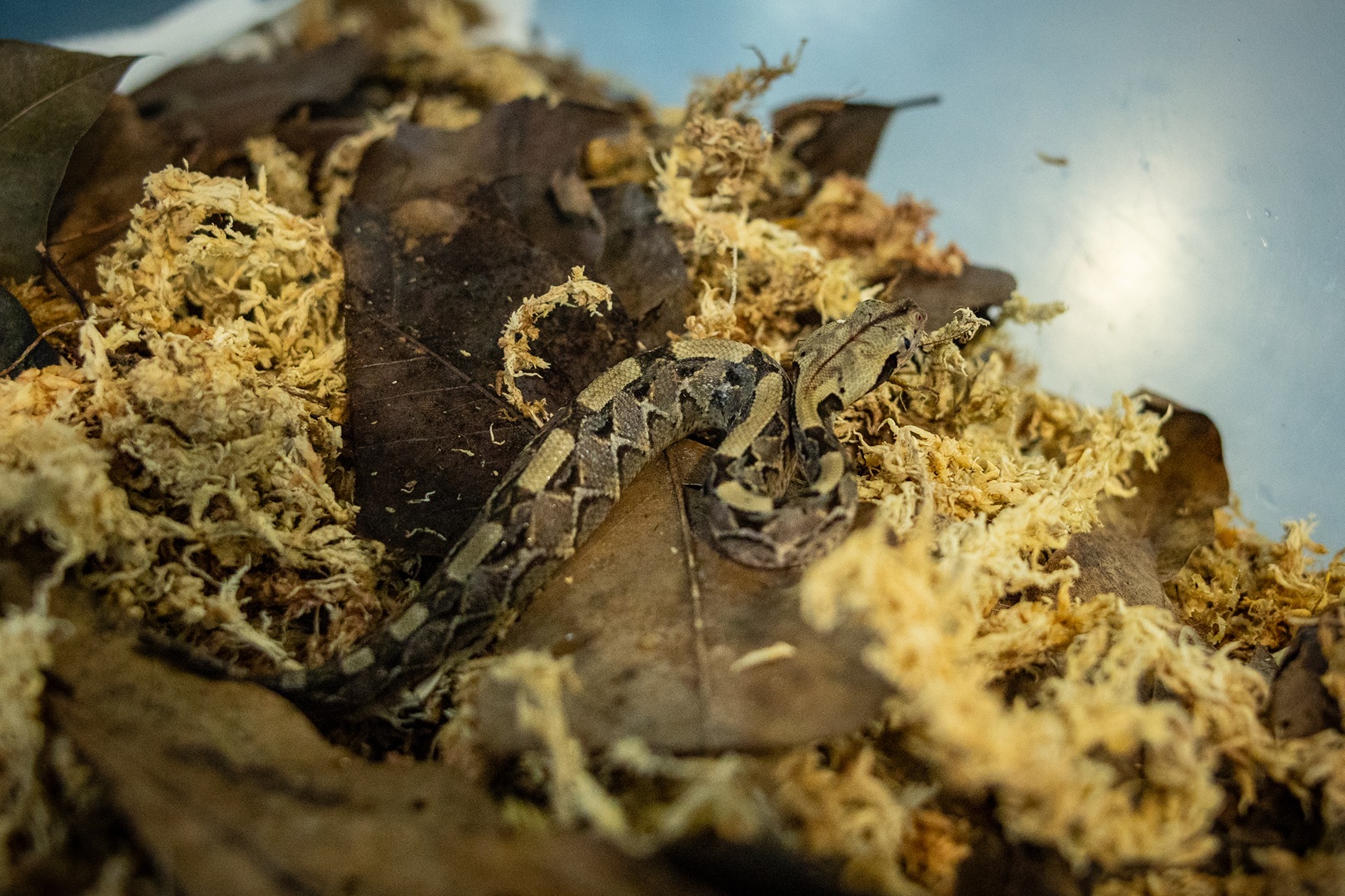
Gaboon vipers have a broad head that resembles a fallen leaf. In the wild, this helps them blend in with the leaf litter on the forest floor.
Photo credit: Mandai Wildlife Group
